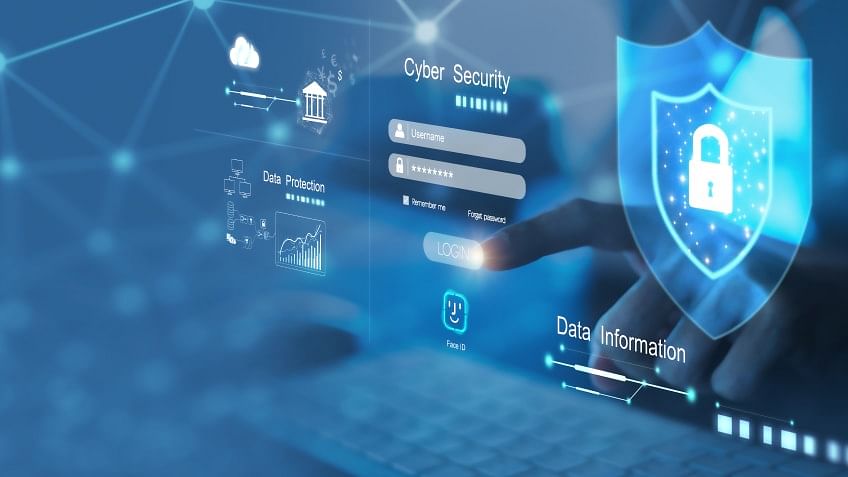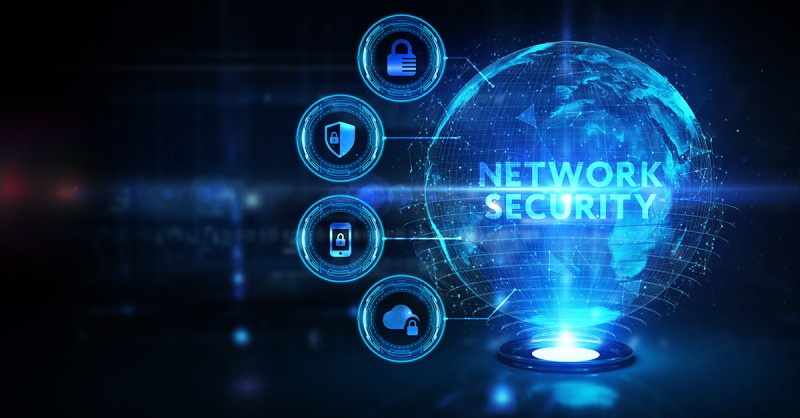Fiber Network Security: Protect Your Fiber Optic Infrastructure from Cyber Threats
Fiber Network Security: Protect Your Fiber Optic Infrastructure from Cyber Threats
Blog Article
How Data and Network Protection Shields Versus Arising Cyber Dangers
In an era marked by the fast advancement of cyber dangers, the significance of information and network security has actually never been much more obvious. As these dangers become more complicated, recognizing the interplay between data safety and network defenses is vital for alleviating threats.
Understanding Cyber Threats

The ever-evolving nature of technology consistently introduces brand-new vulnerabilities, making it imperative for stakeholders to remain vigilant. People might unconsciously drop victim to social engineering methods, where enemies control them right into revealing delicate details. Organizations face one-of-a-kind difficulties, as cybercriminals commonly target them to exploit valuable information or interfere with operations.
Moreover, the rise of the Net of Points (IoT) has actually increased the attack surface area, as interconnected gadgets can offer as entry points for assailants. Recognizing the significance of robust cybersecurity practices is critical for alleviating these risks. By promoting a detailed understanding of cyber companies, threats and individuals can execute efficient approaches to protect their electronic properties, guaranteeing strength despite a progressively complex threat landscape.
Trick Components of Data Safety And Security
Guaranteeing data protection requires a diverse approach that incorporates numerous essential parts. One essential element is information file encryption, which transforms sensitive info right into an unreadable format, available just to licensed customers with the suitable decryption secrets. This works as an essential line of defense against unapproved access.
One more essential component is accessibility control, which regulates who can watch or adjust data. By executing stringent user authentication methods and role-based accessibility controls, companies can reduce the danger of expert hazards and data breaches.

Additionally, information covering up techniques can be used to safeguard delicate information while still permitting its use in non-production environments, such as screening and growth. fft perimeter intrusion solutions.
Network Security Methods
Executing robust network protection techniques is necessary for protecting an organization's electronic facilities. These strategies include a multi-layered approach that includes both software and hardware solutions made to secure the honesty, discretion, and accessibility of information.
One vital component of network protection is the release of firewall softwares, which act as an obstacle between trusted interior networks and untrusted outside networks. Firewall softwares can be hardware-based, software-based, or a combination of both, and they help filter outward bound and incoming website traffic based on predefined security policies.
Additionally, invasion discovery and avoidance systems (IDPS) play an essential role in monitoring network web traffic for suspicious activities. These systems can alert managers to prospective violations and act to reduce threats in real-time. Regularly patching and updating software program is likewise essential, as susceptabilities can be exploited by cybercriminals.
In addition, applying Virtual Private Networks (VPNs) makes sure protected remote accessibility, encrypting data transferred over public networks. Segmenting networks can minimize the strike surface and have potential violations, restricting their effect on the total facilities. By embracing these strategies, organizations can successfully fortify their networks versus emerging cyber dangers.
Best Practices for Organizations
Developing best practices for companies is essential in maintaining a strong protection position. A detailed approach to data and network security begins with routine risk assessments to recognize susceptabilities and prospective threats.
Additionally, constant staff member training and awareness programs are essential. Employees ought to be informed on recognizing phishing efforts, social design methods, and the importance of adhering to protection procedures. Normal updates and spot administration for software application and systems are additionally important to safeguard against understood susceptabilities.
Organizations should establish and her response test occurrence feedback plans to ensure readiness for possible violations. This includes developing clear communication networks and roles during a safety and security event. Data file encryption ought to be employed both at rest and in transportation to secure delicate info.
Lastly, carrying out routine audits and conformity checks will certainly help ensure adherence to well established plans and relevant laws - fft perimeter intrusion solutions. By adhering to these ideal techniques, organizations can significantly improve their resilience versus arising cyber hazards and protect their crucial assets
Future Trends in Cybersecurity
As companies browse an increasingly intricate digital landscape, the future of cybersecurity is positioned to evolve dramatically, driven by emerging innovations and changing danger standards. One famous fad is the combination of man-made knowledge (AI) and artificial intelligence (ML) into security frameworks, permitting real-time danger detection and action automation. These modern technologies can examine large quantities of data to identify anomalies and possible breaches extra efficiently than standard approaches.
An additional critical trend is the surge of zero-trust style, which calls for constant verification of user identifications and gadget security, no matter their location. This approach reduces the risk of expert risks and boosts defense against external assaults.
Furthermore, the raising adoption of cloud solutions requires robust cloud protection strategies that resolve one-of-a-kind vulnerabilities related to cloud settings. As remote work ends up being a permanent component, protecting endpoints will certainly additionally end up being extremely important, leading to a raised emphasis on endpoint discovery and reaction (EDR) solutions.
Lastly, regulatory compliance will remain to shape cybersecurity methods, pushing companies to embrace more rigid information defense actions. Accepting these fads will be essential for companies to strengthen their defenses and browse the progressing landscape of Continued cyber risks successfully.
Conclusion
In verdict, the implementation of durable information and network security procedures is vital for organizations to safeguard versus emerging cyber threats. By making use of security, accessibility control, and effective network protection approaches, organizations can significantly reduce vulnerabilities and protect delicate information.
In an era marked by the quick advancement of cyber dangers, the relevance of data and network safety has actually never ever been extra pronounced. As these hazards end up being more complex, comprehending the interplay in between data safety and security and network defenses is important for alleviating risks. Cyber hazards include a vast range of destructive tasks intended at jeopardizing the privacy, integrity, and availability of networks and data. An extensive strategy to data and network safety starts with routine threat evaluations to identify vulnerabilities and potential risks.In conclusion, the application of durable information and network safety and security measures is essential visit this web-site for organizations to secure against emerging cyber dangers.
Report this page